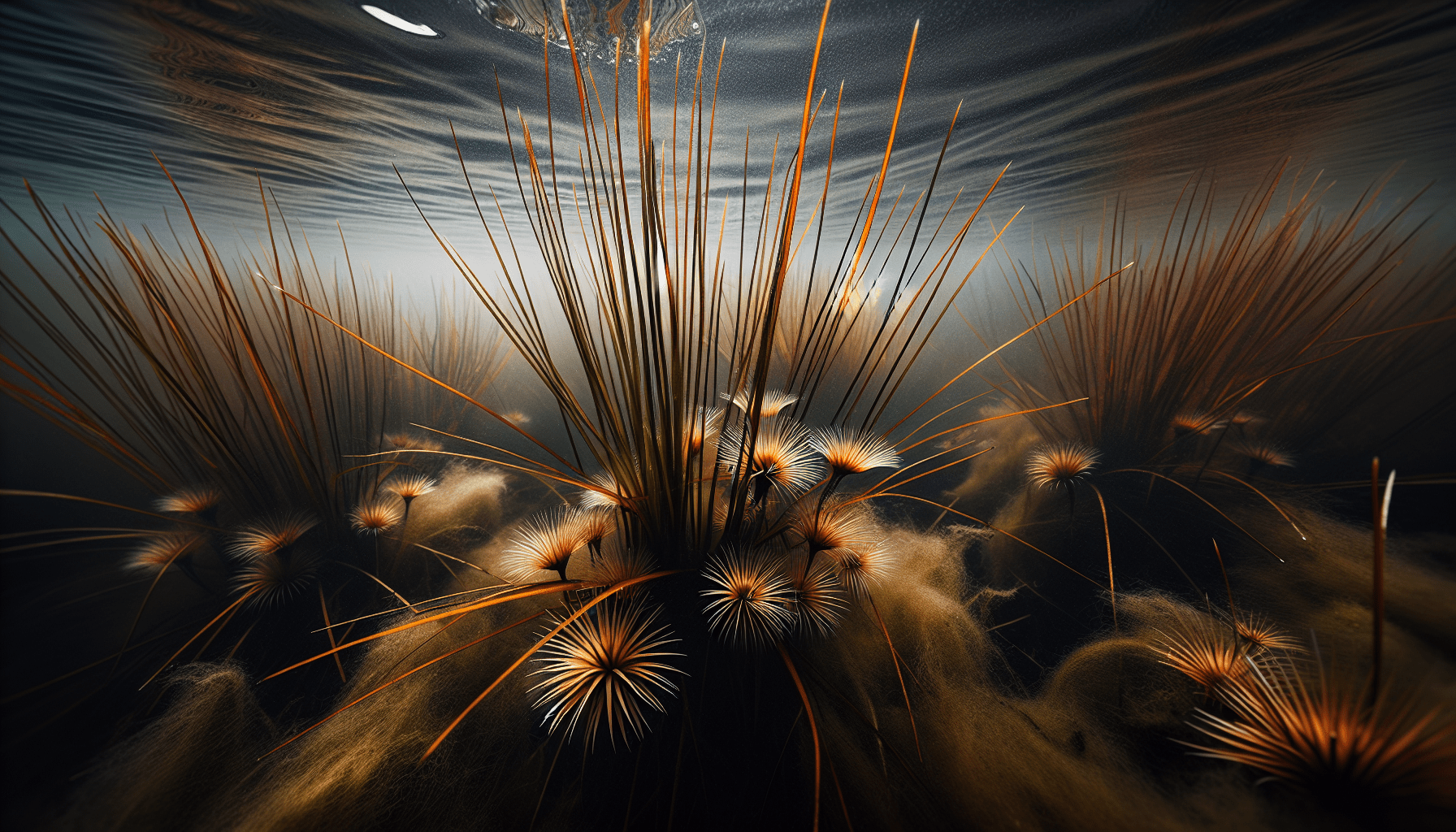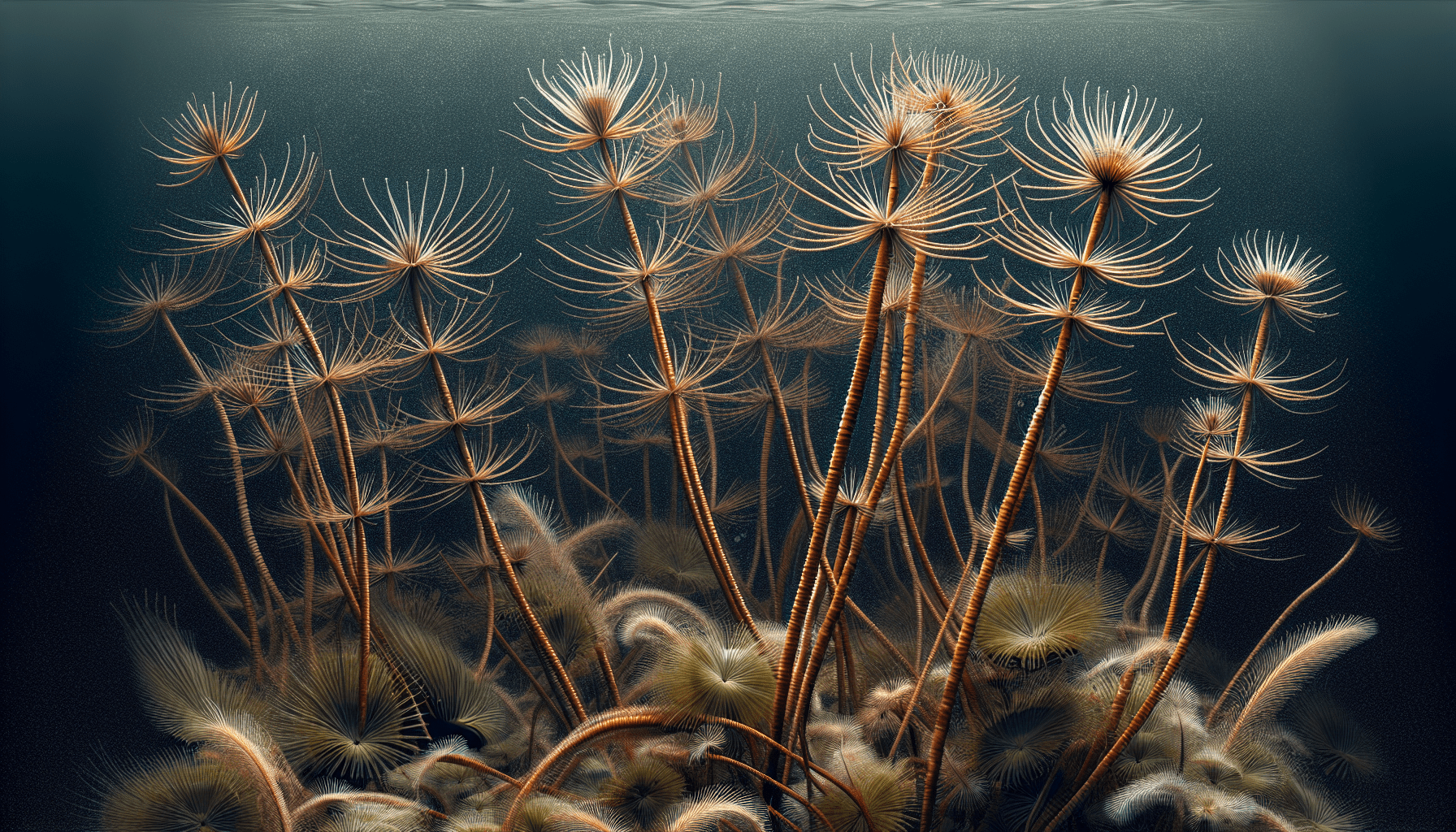As you embark on a comprehensive exploration into the realm of botany, this article exists as a significant beacon on your quest for knowledge. The prime subject matter is the aquatic weed known as Eleocharis Flavescens – an underappreciated yet vital contributor to the ecosystem’s harmony. The discourse to follow will illuminate this distinct species’ unique characteristics, its role in aquatic environments, its potential usages, as well as potential threats it may face. By the end of this article, your understanding of the ecological significance of Eleocharis Flavescens will be greatly enriched and potentially reshape your perspective on the importance of aquatic biodiversity.

Definition of Eleocharis flavescens
Eleocharis flavescens is a perennial aquatic plant belonging to the sedge family, Cyperaceae. Recognized for its distinctive arrangement of green stems that form a grass-like appearance, its distinguishing characteristics make it prevalent in a variety of habitats, including both freshwater and saltwater environments.
Taxonomic classification
As a member of the plant kingdom, the taxonomic classification of Eleocharis flavescens falls under the order Poales, and within the family Cyperaceae. Its genus is Eleocharis, and the species is denoted as E. flavescens. Like all plants, it falls under the domain Eukaryota and is classified within the plant division Magnoliophyta.
Common terms used to refer it
Commonly, you may find Eleocharis flavescens referred to as Yellow Spikerush or Pale Spikerush. The term ‘spikerush’ originates from its distinctive growth habit, which typically resembles spikes of grass, a common characteristic of many species in the Eleocharis genus.
Regions where it naturally grows
Eleocharis flavescens naturally thrives in a wide array of regions worldwide, from North America to Europe, Africa, and parts of Asia. It can typically be found in damp to wet soils around lakes, ponds, stream margins, wet meadows, and marshes.
Morphology of Eleocharis flavescens
Eleocharis flavescens exhibits a range of features consistent with emergent aquatic vegetation, adapting to both freshwater and saline environments. Its morphology is defined by various parts such as the stem, leaves, root system, and flowers and fruits.
Characteristics of the stem
The stems of Eleocharis flavescens are cylindrical, often standing upright and rooting at the base. They can be smooth or slightly rough to the touch, measuring between 20 to 80 centimeters in height and 1-2 millimeters thick, with no leaves present.
Details about leaves
The leaves of Eleocharis flavescens are reduced to mere sheaths that envelop the lower parts of the stem. These sheaths are often brownish to chestnut colored and truncated at the tip without any distinct shape.
Features of the root system
The root system of this plant is fibrous and rhizomatous, enabling the plant to form colonies under favorable conditions by re-rooting from the basal nodes. This characteristic aids in its effective colonization of various water bodies where it naturally occurs.
Description of flowers and fruits
As for reproductive organs, the inflorescences of Eleocharis flavescens occur singularly at the tips of the stems, usually comprising 4-25 spikelets. These tiny flowers give way to fruits, which are small, ovoid-elliptic achenes covered in minute warts.
Life Cycle of Eleocharis flavescens
The life cycle of Eleocharis flavescens begins with seed germination, followed by various stages of growth and development.
Periods of seed germination
The germination process commences when conditions become optimal, which usually occurs during the beginning of the wet season. The seeds will then start to sprout, taking in water from the soil and expanding as the embryonic plants grow.
Growth and development stages
As the seedlings emerge, Eleocharis flavescens enters the vegetative growth stage. It grows rapidly, quickly building an extensive root system, and starting to form stems and leaves in just a few weeks.
Reproductive phase
Following vegetative growth, Eleocharis flavescens enters the reproductive phase. This is marked by the development of inflorescences, yielding tiny flowers which are then pollinated. After successful pollination, these flowers give way to fruits that contain the seeds for the next generation.
Dormant period
During unfavorable conditions, Eleocharis flavescens may enter a dormant period. During this stage, all growth and development are halted, and the plant focuses on preserving energy. Dormancy is broken once conditions become favorable, allowing Eleocharis flavescens to resume its normal life cycle.

Habitat Preferences
Eleocharis flavescens displays a particularly broad ecological amplitude, suggesting versatility in its habitat preferences. It is mainly observed in limnic or marshy areas but also vegetation comprised of salt meadows or even more terrestrial environments.
Water quality parameters
This plant adapts well to varying water quality parameters, including a range of pH levels, high turbidity, and differing oxygen concentrations. However, it prefers moderately acidic to neutral conditions for optimal growth.
Substrate preferences
Eleocharis flavescens prefers waterlogged soils that are either sandy or silty. It performs best in substrates that are rich in nutrients, particularly nitrogen and phosphorous.
Temperature range preferences
As a perennial plant capable of growing in diverse environments, Eleocharis flavescens has a wide temperature tolerance. However, it demonstrates optimal growth in temperate climates.
Lighting preferences
Eleocharis flavescens requires full or partial sunlight throughout the day for optimal growth. It can withstand varying light conditions, making it a versatile species within its natural habitats.
Environmental Impact of Eleocharis flavescens
The environmental impact of Eleocharis flavescens is notable, especially with concerns to interactions with native species, water bodies, and local ecosystems.
Interactions with native species
While Eleocharis flavescens itself is native to many regions, its aggressive growth habits can overshadow other native species, thus affecting overall biodiversity. Yet, it can provide a food source for various waterfowl and protection for aquatic organisms promoting a diverse ecosystem.
Influence on water bodies
Its extensive root system helps to stabilize soils, preventing erosion, and adding structure to the water’s edge. Furthermore, it is capable of influencing nutrient dynamics in water bodies, potentially improving water quality.
Impact on the local ecosystem
As part of local ecosystems, Eleocharis flavescens plays a key role in providing habitats and food resources for diverse fauna. However, unchecked growth can lead to mono-dominance, affecting an ecosystem’s stability and natural balance.
Culinary Uses of Eleocharis flavescens
While not a popular dietary staple, Eleocharis flavescens is not without its culinary uses.
Edible parts of the plant
The young shoots and seeds of Eleocharis flavescens are reportedly edible. These parts can be eaten raw or cooked depending on the method of preparation.
Popular dishes incorporating the plant
While specific dishes that use Eleocharis flavescens are not as common, it can be employed in various meals due to its nutritional benefits and unique taste.
Nutritional value of the plant
While data on its nutritional value is limited, the plant is generally believed to be rich in various minerals and vitamins, similar to many other aquatic plants.
Medical Uses of Eleocharis flavescens
Eleocharis flavescens has long been used in traditional medicine systems, and some of its medicinal properties are now being evaluated through modern scientific studies.
Traditional medicinal uses
In traditional medicine, Eleocharis flavescens has been used to treat a variety of conditions, from digestive disorders to skin ailments. It is mainly used for its diuretic properties.
Modern medical considerations and studies
Contemporary studies into the medicinal properties of Eleocharis flavescens are limited. However, existing studies hint towards the potential use of Eleocharis flavescens in modern medicine.
Preparation of medicinal products using the plant
The method of preparing medicinal products from Eleocharis flavescens will depend on the intended use. Generally, it may involve heating, crushing, or extracting parts of the plant to access the medicinal compounds.
Cultivation and Management of Eleocharis flavescens
Cultivating Eleocharis flavescens involves creating conditions similar to its natural habitat.
Preferred cultivation conditions
Eleocharis flavescens prefers wet or damp conditions, ideally near bodies of fresh water. It requires full to partial sunlight as well as nutrient-rich soil.
Steps for cultivation
Cultivating Eleocharis flavescens begins with preparing the planting area to replicate its natural conditions, followed by planting during the appropriate season. The plants should be watered regularly and watched for any signs of pests or disease.
Maintenance and regulation of the plant
Maintenance includes managing the growth of the plant to prevent it from proliferating beyond the desired area. It should be pruned regularly and replanted to keep it under control.
Harvesting practices
When suitable for harvest, which comes after the flowering and fruiting stage, the stems are cut and separated from the roots. Each part of the plant can then be processed as per its intended use.
Threats and Conservation
Although Eleocharis flavescens is a widespread species, certain factors can potentially impact its existence.
Threat to Eleocharis flavescens
Threats faced by Eleocharis flavescens include habitat destruction due to urbanization, pollution of water bodies, and invasive species that can crowd out native plants including Eleocharis flavescens itself.
Conservation strategies for Eleocharis flavescens
Conservation strategies should involve habitat protection, environmental education, and implementing management strategies to ensure its sustainable use.
Organizations involved in conservation of the species
Numerous organizations at local, regional, and international levels are involved in the conservation of plant species, including Eleocharis flavescens. These include institutions which focus on biodiversity conservation.
Research on Eleocharis flavescens
Research into Eleocharis flavescens is ongoing, focusing on various aspects of the plant, including its medicinal properties, cultivation techniques, and impact on ecosystems.
Latest findings on the plant
Recent studies have focused on the plant’s bioactive compounds, and its potential medicinal uses. There’s also interest in its environmental impact, especially in relation to ecosystem health and biodiversity.
Areas where more research is needed
There is still a need for further research into the plant’s physiological characteristics, genetic makeup, and the impact of environmental factors on its growth and survival.
Methods and approaches used in research
Many different methods, ranging from field observation to laboratory analysis and genetic testing, have been used to study Eleocharis flavescens. These approaches continue to provide valuable information on the species.
In conclusion, Eleocharis flavescens is an interesting species with various implications for its habitat, cuisine, and potential medical uses. However, like with any species, it’s essential to manage and conserve it appropriately in order to maintain biodiversity and ecosystem health.